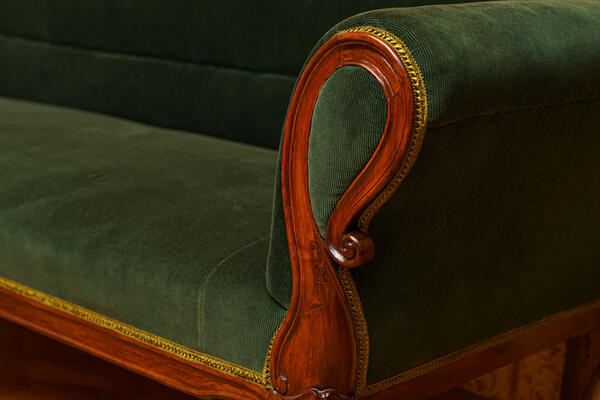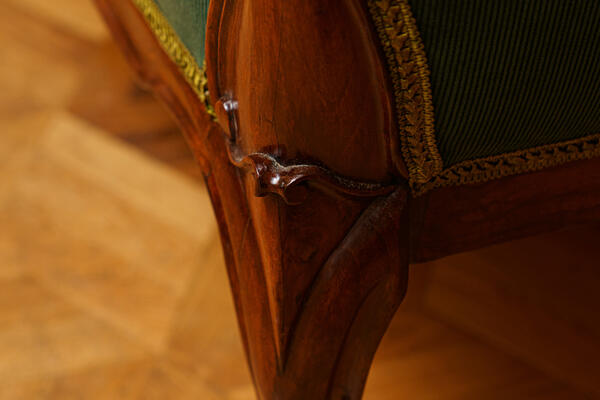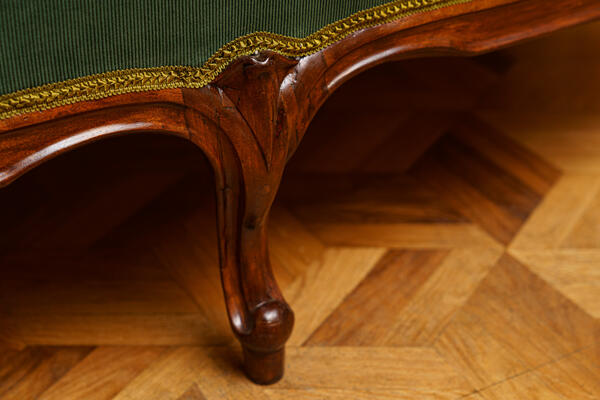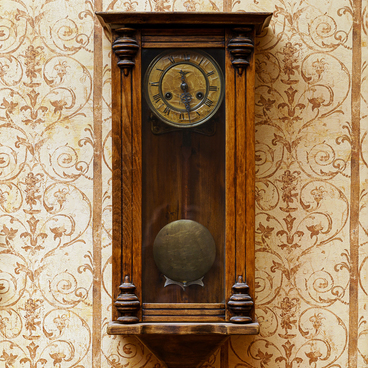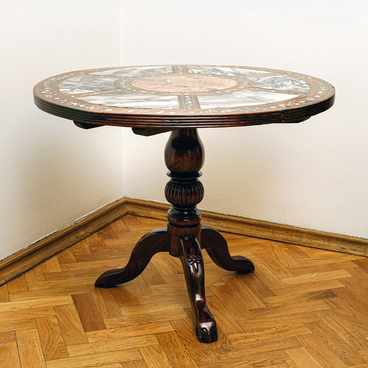The Biedermeier-style upholstered sofa from the living room set, as well as the mirror in a mahogany frame above it, belonged to the family of Vladimir and Yulia Stepun.
The Moscow Art Theater actor Vladimir Augustovich Stepun and his wife Yulia Lvovna, née Tarasevich, lived at 41 Sivtsev Vrazhek. The couple met Mikhail Bulgakov when he began working at the Moscow Art Theater in the mid-1920s. Then the theater staged the writer’s debut play based on the novel “The White Guard”.
While working on the performance, the writer had to face the censors and, under pressure, make changes to the text. Instead of the title “The White Guard”, he had to choose something more neutral. As a result, the play became known as “The Days of the Turbins”.
The premiere took place on October 5, 1926. The production was a huge success. Mikhail Bulgakov became famous overnight. In celebration of the premiere, it was decided to arrange a festive banquet for the artists of the Moscow Art Theater, but Bulgakov could not invite guests to his apartment: together with his second wife Lyubov Belozerskaya, he rented two small rooms in Maly Lyovshinsky Lane.
“The building is an ordinary Moscow mansion, of which there are thousands of thousands in the city: the owners once lived in them and hosted guests, and children were sent to the back of the house or to the mezzanine — richer ones had governesses, poorer ones — nannies. And now we are living down where they lived with nannies,” Mikhail Bulgakov’s second wife Lyubov Belozerskaya later recalled.
Vladimir Stepun came to the rescue and offered to hold a banquet at his home, in an apartment in Sivtsev Vrazhek. Those who acted in the play — Boris Dobronravov, Evgeny Kaluzhsky, Vera Sokolova, Nikolai Khmelyov, Mikhail Yanshin and others, as well as Bulgakov’s friends from his literary circle, came to celebrate the premiere.

